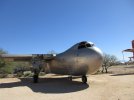So, as many of us, I'm into steel and metallurgy and have been since I was a young kid. (the benefits of having a dad who worked at the large steel mill for 40 years)
Elon Musk's spaceship is stainless steel
https://arstechnica.com/science/2019/01/elon-musk-is-really-really-excited-about-his-starship/
some of his tweets:
So, what's your best guess about the composition of his ss?
I hope Larrin
sees this
Larrin
sees this 
My guess, If I had to make one... is something like 316H ? It's high strength and temp... only about 0.1% carbon, and 10-14% nickel, 2-3% moly
Anyway, I look forward to hearing info/updates/news about this. If anyone has knowledge of better structural ss, please share : )
Elon Musk's spaceship is stainless steel
https://arstechnica.com/science/2019/01/elon-musk-is-really-really-excited-about-his-starship/
some of his tweets:
- The vehicle's exterior will be made from a stainless-steel alloy that will not buckle and will remain stable on the launchpad even when unpressurized. The strength and weight of "full hard stainless" at cold temperatures is slightly better than carbon fiber, at room temperature it is worse, and at high temperature it is vastly better.
- The metallic skin of Starship will get too hot for paint, so it will have a stainless mirror finish. It will need much less shielding as a result, and areas that take the brunt of atmospheric entry heating will be activity cooled with residual liquid methane. As a result, "Starship will look like liquid silver."
So, what's your best guess about the composition of his ss?
I hope
My guess, If I had to make one... is something like 316H ? It's high strength and temp... only about 0.1% carbon, and 10-14% nickel, 2-3% moly
Anyway, I look forward to hearing info/updates/news about this. If anyone has knowledge of better structural ss, please share : )


